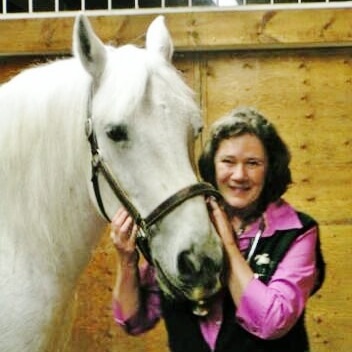Sugar phobia has reached a point where virtually any problem with a horse’s hooves may be blamed on sugar. From thrush to weak laminar connections, sugar is blamed. This phobia often comes with stories of how horses’ feet have improved once the diet was changed. However, sugar is rarely the culprit here. Many different problems cause quality issues in hooves but most have nothing to do with sugar.
“Sugar” in the diet comes from feed both high in simple sugars, like molasses, and foods high in starch. Because the horse’s body digests starch down to glucose in the intestinal tract, that’s what gets absorbed into the blood. Sugar is as essential to the life of plants as it is to animals, so everything has it, but in varying amounts.
The sugar-hoof connection is via insulin. Sugar causes insulin release to varying extents depending on the individual. Sustained exaggerated insulin responses (hyperinsulinemia) lead to overt laminitis or a smoldering condition where laminar connections are weak and stretched. This scenario is a genuine connection between sugar/starch and hoof health, but it only applies to the 10 to 12 percent of the equine population that actually has those exaggerated insulin responses.
If the horse has normal insulin testing, it’s not sugar causing the problems with the hooves. Possible factors (both positive and negative) in hoof changes include:
Moisture – Change from pasture to a dry lot or track typically means a drier environment.
Protein or Amino Acids – Feed changes may have benefited the protein intake or amino acid profile. For example, if you changed from grain to a balancer that has methionine this could be helpful. Just eliminating grain and replacing with hay increases protein intake. For example, a pound of a 12% protein grain has 54 grams of protein and as many as 2.55 Kcal. Whereas a pound of 10% protein hay has 45 grams of protein but you have to feed three times as much to match the calories, so protein intake jumps up to 135 grams!
Minerals – This is probably where most of the differences originate. If you take the horse off pasture or bagged feeds you are reducing the iron intake significantly and, in many cases, manganese as well. These two mineral excesses can worsen the already existing copper and zinc deficiencies in many areas. Feed change recommendations often include adding a high zinc and copper supplement.
Better Hoof Care – On finding issues, your hoof care professional may shorten the interval between trims which can make a huge difference.
Less Movement – Movement is good for hoof health, as long as there is a good trim and the feet don’t hurt. Horses with any hoof problem, like negative palmar angle and irritated deep digital flexor tendon, can and often do become lamer when turned out because they are moving around a lot more.
If you suspect a horse has hoof problems related to insulin responses, have him tested. Only lab work can really answer that question. If it’s not insulin related, consider the points above to attempt to determine what’s going on with the horse.
See this article in the October 2021 online edition:

Dr. Eleanor Kellon is an established authority in the field of equine nutrition for over 30 years, and a founding member and leader of the Equine Cushings and Insulin Resistance (ECIR) group, whose mission is to improve the welfare of horses with metabolic disorders via integration of research and real-life
Started in 1999, the ECIR Group is the largest field-trial database for PPID and EMS in the world and provides the latest research, diagnosis, and treatment information, in addition to dietary recommendations, for horses with these conditions. Even universities do not and cannot compile and follow long term as many in-depth case histories of PPID/EMS horses as the ECIR Group.





